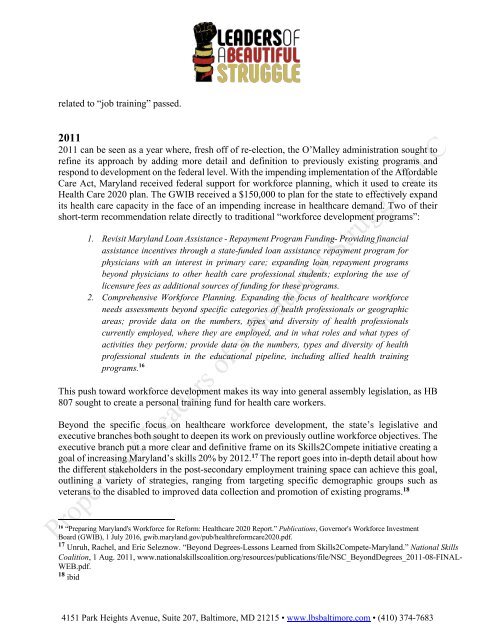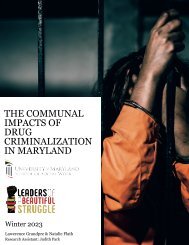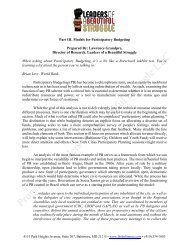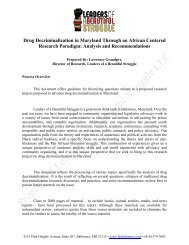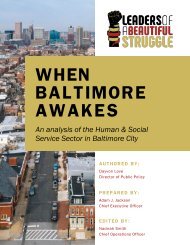Workforce Development Legislation and Practice Literature Review, Maryland, 2007-2017
This document attempts to create an overview of the literature around the legislative and political dynamics around workforce development theory and practice in Maryland through the years 2007 through 2017. This period includes three different gubernatorial regimes, three presidents, a massive shift in federal workforce development policy, and the largest economic contraction in the United States since the great recession. While the tumultuous circumstances this time period encompasses adds an additional layer of complexity to an already diverse state workforce environment, over time general trends can be observed and evaluated
This document attempts to create an overview of the literature around the legislative and political dynamics around workforce development theory and practice in Maryland through the years 2007 through 2017. This period includes three different gubernatorial regimes, three presidents, a massive shift in federal workforce development policy, and the largest economic contraction in the United States since the great recession. While the tumultuous circumstances this time period encompasses adds an additional layer of complexity to an already diverse state workforce environment, over time general trends can be observed and evaluated
You also want an ePaper? Increase the reach of your titles
YUMPU automatically turns print PDFs into web optimized ePapers that Google loves.
elated to “job training” passed.<br />
2011<br />
2011 can be seen as a year where, fresh off of re-election, the O’Malley administration sought to<br />
refine its approach by adding more detail <strong>and</strong> definition to previously existing programs <strong>and</strong><br />
respond to development on the federal level. With the impending implementation of the Affordable<br />
Care Act, Maryl<strong>and</strong> received federal support for workforce planning, which it used to create its<br />
Health Care 2020 plan. The GWIB received a $150,000 to plan for the state to effectively exp<strong>and</strong><br />
its health care capacity in the face of an impending increase in healthcare dem<strong>and</strong>. Two of their<br />
short-term recommendation relate directly to traditional “workforce development programs”:<br />
1. Revisit Maryl<strong>and</strong> Loan Assistance - Repayment Program Funding- Providing financial<br />
assistance incentives through a state-funded loan assistance repayment program for<br />
physicians with an interest in primary care; exp<strong>and</strong>ing loan repayment programs<br />
beyond physicians to other health care professional students; exploring the use of<br />
licensure fees as additional sources of funding for these programs.<br />
2. Comprehensive <strong>Workforce</strong> Planning. Exp<strong>and</strong>ing the focus of healthcare workforce<br />
needs assessments beyond specific categories of health professionals or geographic<br />
areas; provide data on the numbers, types <strong>and</strong> diversity of health professionals<br />
currently employed, where they are employed, <strong>and</strong> in what roles <strong>and</strong> what types of<br />
activities they perform; provide data on the numbers, types <strong>and</strong> diversity of health<br />
professional students in the educational pipeline, including allied health training<br />
programs. 16<br />
This push toward workforce development makes its way into general assembly legislation, as HB<br />
807 sought to create a personal training fund for health care workers.<br />
Beyond the specific focus on healthcare workforce development, the state’s legislative <strong>and</strong><br />
executive branches both sought to deepen its work on previously outline workforce objectives. The<br />
executive branch put a more clear <strong>and</strong> definitive frame on its Skills2Compete initiative creating a<br />
goal of increasing Maryl<strong>and</strong>’s skills 20% by 2012. 17 The report goes into in-depth detail about how<br />
the different stakeholders in the post-secondary employment training space can achieve this goal,<br />
outlining a variety of strategies, ranging from targeting specific demographic groups such as<br />
veterans to the disabled to improved data collection <strong>and</strong> promotion of existing programs. 18<br />
16<br />
“Preparing Maryl<strong>and</strong>'s <strong>Workforce</strong> for Reform: Healthcare 2020 Report.” Publications, Governor's <strong>Workforce</strong> Investment<br />
Board (GWIB), 1 July 2016, gwib.maryl<strong>and</strong>.gov/pub/healthreformcare2020.pdf.<br />
17 Unruh, Rachel, <strong>and</strong> Eric Seleznow. “Beyond Degrees-Lessons Learned from Skills2Compete-Maryl<strong>and</strong>.” National Skills<br />
Coalition, 1 Aug. 2011, www.nationalskillscoalition.org/resources/publications/file/NSC_BeyondDegrees_2011-08-FINAL-<br />
WEB.pdf.<br />
18 ibid<br />
4151 Park Heights Avenue, Suite 207, Baltimore, MD 21215 • www.lbsbaltimore.com • (410) 374-7683


